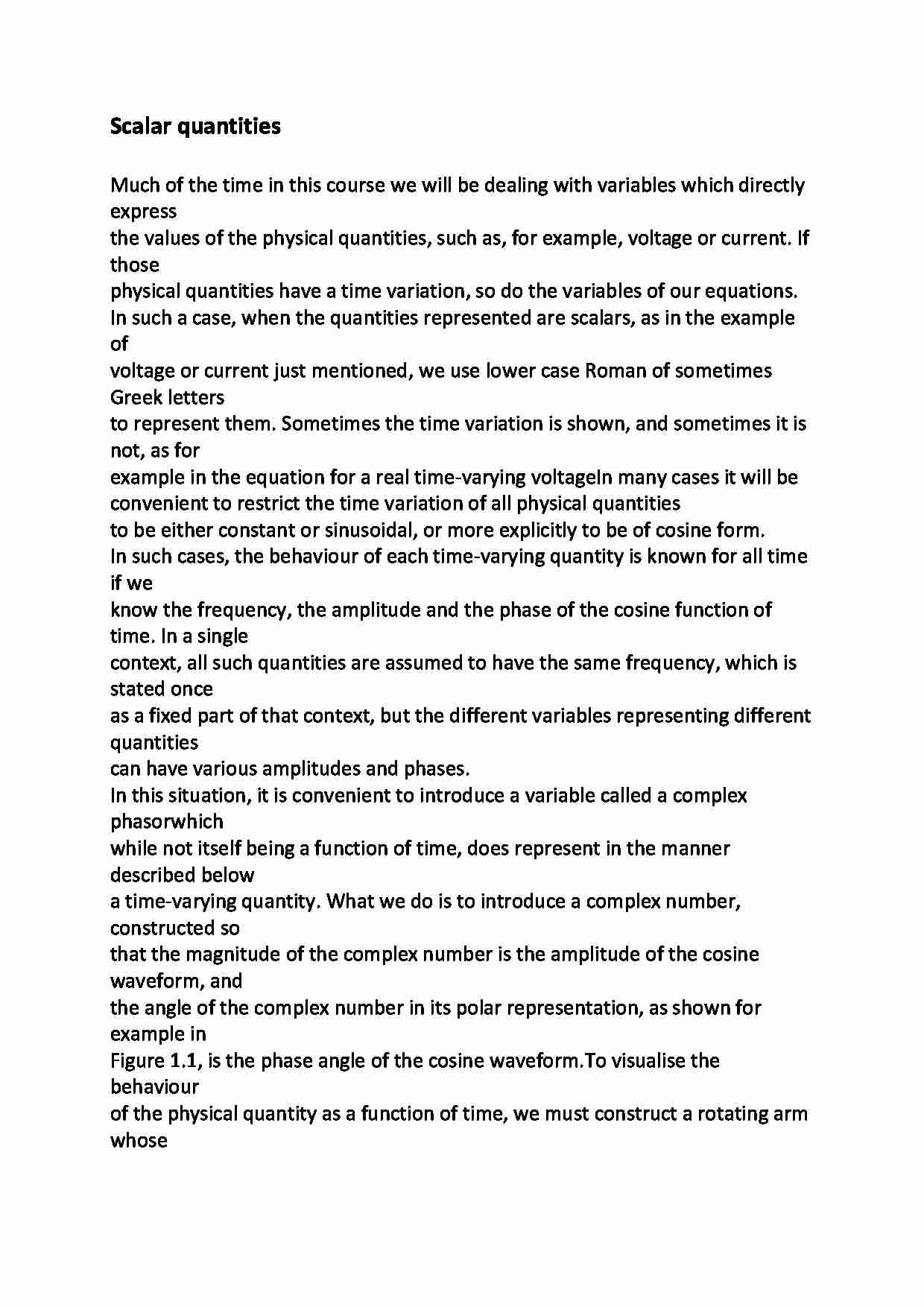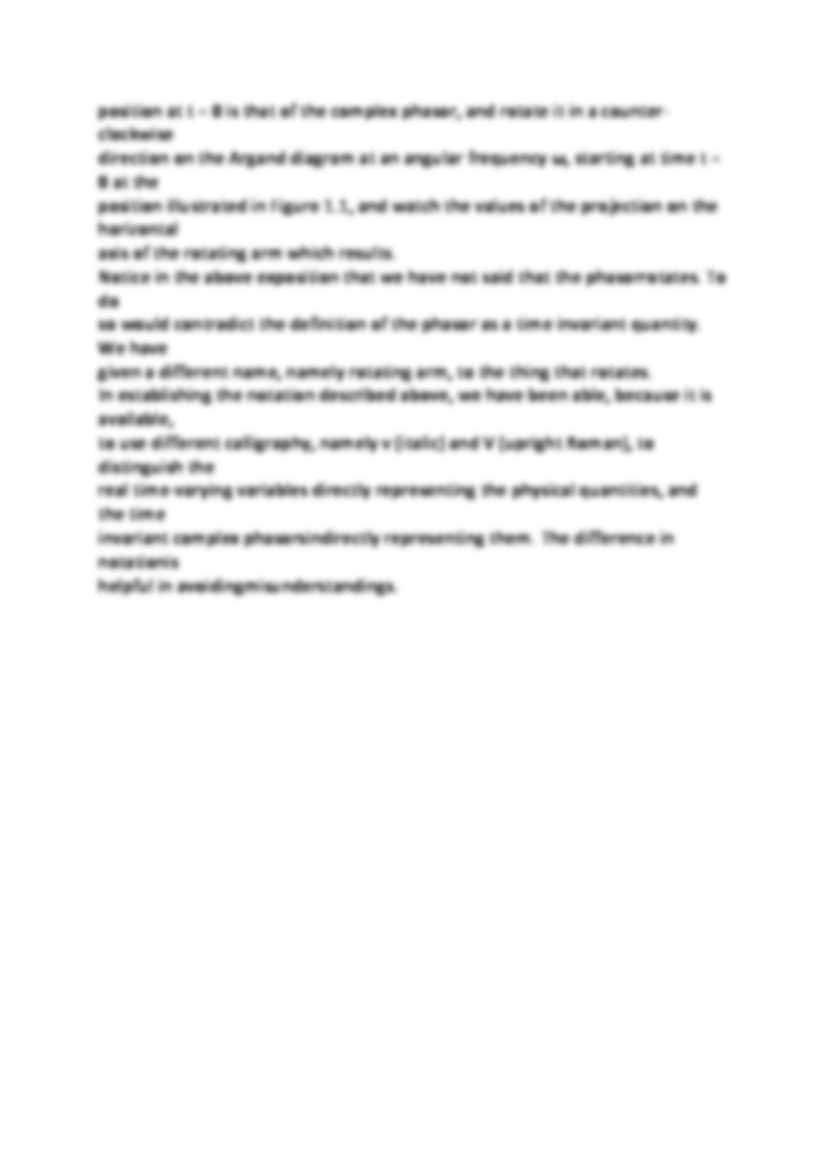To tylko jedna z 2 stron tej notatki. Zaloguj się aby zobaczyć ten dokument.
Zobacz
całą notatkę


Scalar quantities Much of the time in this course we will be dealing with variables which directly express
the values of the physical quantities, such as, for example, voltage or current. If those
physical quantities have a time variation, so do the variables of our equations.
In such a case, when the quantities represented are scalars, as in the example of
voltage or current just mentioned, we use lower case Roman of sometimes Greek letters
to represent them. Sometimes the time variation is shown, and sometimes it is not, as for
example in the equation for a real time-varying voltage In many cases it will be convenient to restrict the time variation of all physical quantities
to be either constant or sinusoidal, or more explicitly to be of cosine form.
In such cases, the behaviour of each time-varying quantity is known for all time if we
know the frequency, the amplitude and the phase of the cosine function of time. In a single
context, all such quantities are assumed to have the same frequency, which is stated once
as a fixed part of that context, but the different variables representing different quantities
can have various amplitudes and phases.
In this situation, it is convenient to introduce a variable called a complex phasor which
while not itself being a function of time, does represent in the manner described below
a time-varying quantity. What we do is to introduce a complex number, constructed so
that the magnitude of the complex number is the amplitude of the cosine waveform, and
the angle of the complex number in its polar representation, as shown for example in
Figure 1.1, is the phase angle of the cosine waveform. To visualise the behaviour
of the physical quantity as a function of time, we must construct a rotating arm whose
position at t = 0 is that of the complex phasor, and rotate it in a counter-clockwise
direction on the Argand diagram at an angular frequency ω, starting at time t = 0 at the
position illustrated in Figure 1.1, and watch the values of the projection on the horizontal
axis of the rotating arm which results.
Notice in the above exposition that we have not said that the phasor rotates. To do
so would contradict the definition of the phasor as a time invariant quantity. We have
given a different name, namely rotating arm, to the thing that rotates.
In establishing the notation described above, we have been able, because it is available,
to use different calligraphy, namely v (italic) and V (upright Roman), to distinguish the
real time-varying variables directly representing the physical quantities, and the time
invariant complex phasors indirectly representing them. The difference in notation is
... zobacz całą notatkę




Komentarze użytkowników (0)